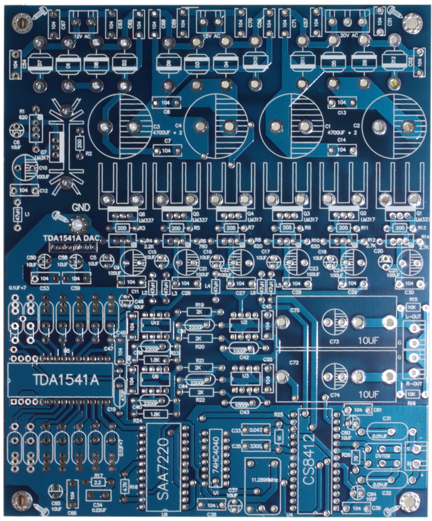Going, going, gone…
By Bryan Bergeron
Fortunately, there are several viable suppliers — including advertisers in this magazine — offering quality kits at affordable prices. Kits offer real savings in both time and money. If you turn to Digi-Key or other major parts suppliers, you won’t get a price break on a handful of components, and if you have to reorder a part you forgot on your first order, shipping costs can total more than the components.
Similarly, while I use online printed circuit board manufacturing services, custom boards are an increasingly expensive option. I’ve been using the all-in-one prototyping boards offered by several suppliers when possible. Some of the oddest and most useful boards are offered by SparkFun Electronics ([url=http://www.sparkfun.com]http://www.sparkfun.com[/url]). I especially like their triangular 3D protoboards for robotics work.
Where the domestic kits market is apparently alive and well, I like to sample the offerings of overseas kit makers. One of my favorite kit suppliers is AnalogMetric ([url=http://www.analogmetric.com]http://www.analogmetric.com[/url]), a Hong Kong-based firm that caters to the high-end DIY audio market. I’ve purchased several tube audio amp kits in the past with great results. My most recent purchase was a TDA1541A digital-to-analog (DAC) kit that takes a digital audio signal from a CD player, computer, or music synthesizer, and outputs a clean analog audio signal.

The unpopulated 2.5 mm PCB for the DAC kit is shown in the photo. As you can see, the labeling on the bullet-proof board is so extensive that kit building is virtually paint-by-numbers. It took an afternoon for me to assemble the kit and a few minutes for setup. Performance of the 16-bit DAC is comparable to my commercial recording gear, and the board layout is so clean that it’s a shame to hide it in an aluminum enclosure.
AnalogMetric kits — which range in price from $15 to well over $1,000 — aren’t for novice kit builders. While the boards can probably handle a few failed attempts at soldering, there is little handholding for the construction and testing process. It’s assumed that you can read a schematic, identify components, know when to observe component polarity, and know how to connect a power transformer to the line and the circuit board.
If you’re uncertain about the difficulty level of a particular kit, take a look at the photographs, full schematics, and documentation available on the AnalogMetric website. With many of the kits, you can either order an upgraded kit or order the base kit and add your own upgrades. For example, I ordered the basic DAC kit with an NE5534 op-amp, and replaced the amp with an AD797AN op-amp that I had purchased for another project.
The main downsides of dealing with an offshore company are the postage and shipping delay. I avoid the postage penalty with AnalogMetric by ordering bare kits without a power transformer. If you don’t have supply transformers in your junk box, then you should consider their toroidal transformers. They’re compact, well built, and — for pro audio components — relatively affordable.
Another of my favorite offshore kit suppliers is Oatley Electronics ([url=http://www.oatleyelectronics.com]http://www.oatleyelectronics.com[/url]), located down under. Oatley kits are great for beginners of any age, with starter kits such as simple LED illuminators. They also make serious (but easy to build) and affordable kits for enthusiasts. For example, last year I wrote about Oatley’s sub-miniature tube-type headphone amplifier which I modified for use with my electric guitar.
I recently purchased the upgraded headphone amplifier kit — the K272 — which uses a pair of JAN6418 sub-miniature pentodes to provide stereo amplification. While the circuit diagram is not posted online, the circuit board layout and parts list is available. This should be enough information for you to decide whether it’s more economical to order the kit and pay postage from Australia or scrounge around for local parts. Regardless of cost, I’m hooked on their tube amplifiers.
While kits are a quick fix for the increasing scarcity of affordable components, for the long-run, I’m a big believer in teardowns. Not only are thoughtful teardowns a source of components, but they can provide insight into how devices are constructed. It’s one thing to open a shrink-wrapped bag of components and another to carefully remove components from a circuit board. By examining components in context, you can see how issues such as heat dissipation, fusing, component bypassing, and component density are addressed.
If you’re fortunate enough to live near a parts supplier, consider yourself lucky. If not, consider the myriad options available from kit suppliers just a few keystrokes away. NV
Comments

